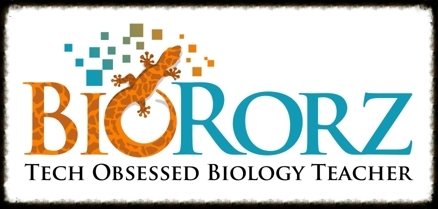A Shout Out to Awesomeness
About 13 years ago, I met a fellow biology teacher, Alfred Olivas, while working at Escuela Campo Alegre. We were introduced by a mutual friend at a conference shortly after I started working in Caracas. He worked in Valencia at the time so he shamelessly started using me for a place to stay when he came to the big city. Luckily I didn't hold it against him that he used more hair product than I did and it took him twice as long to get ready. I guess the fact that he was a fellow Texan helped his cause a little. Our paths crossed again a few years later in Shanghai where he is still teaching today. Thirteen years later, we are still in touch and after what he shared with me today, I am so glad that we are. Allow me to introduce Alfred in all of his awesomeness with his SAS -SY productions movie trailer for his incredibly adventurous unit on weather and climate:
I totally want to be in his class! Oh to be a 6th grader again! Imagine what the full length film would involve! Before each unit, Alfred and his partner teacher, Lisa Fung-Kee-Fung, create these unit trailers using iMovie '11 to amp up the anticipation of their students for the new material. As soon as he shared this, I immediately went to check it out. I was even more excited to read in a post from Mac Life, "You’ll be pleased to know that you don’t actually need to think too much
about this: iMovie ’11 comes with its own trailer-making factory. Just
add the clips in place, type in some information, and you’re good to go." There are 15 different types of ready made themes complete with music and all. Check out the instructions on how to make a trailer at this link.
The possibilities for this sort of technology are endless. One application would be that students could create summaries of their learning using this movie trailer format. Another possibility would be to propose this as an option for students to introduce their designs for my "Save Earth" competition in Physics. I am definitely adding this to the plan. This would also be a great project for students preparing for their Week Without Walls trips as their is a significant amount of preparation and planning that occurs prior to the experience. I CAN'T wait to start experimenting with this tool. In fact, I am going to cut this post short.
Dear Fredo,
I am currently accepting applications for my science teacher crush of 2013-2014. There is some tough competition out there, but you have jumped up to the top of my list. Keep those amazingly creative ideas coming. Oh, and just out of curiosity, when do you think you will manage to make your way to India so that we can actually work together in the same department? I would even be willing to let you use my hair dryer from time to time, if you promised to share some of your awesomeness!
P.S. If you want to learn more about what Alfred is doing in science, you can check out his site or just send him an e-mail.
P.S.S. If you can think of any way to enhance learning in your classroom using movie trailers please share in the comments session. This is just too fun to pass up!






